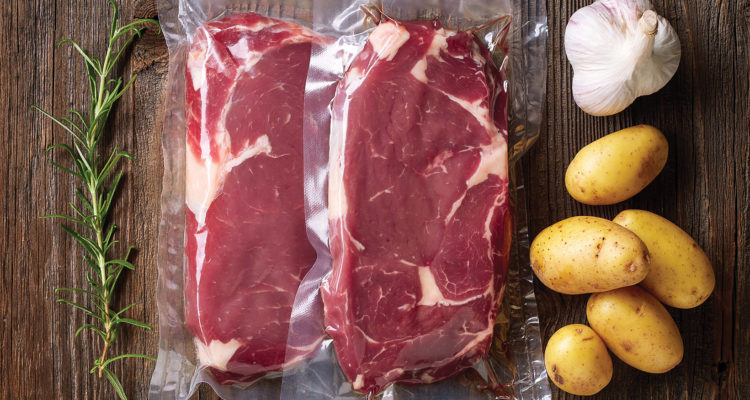Story by Dave Eckert
Sous-vide. Everywhere, it seems, people are talking about it, experimenting with it, and singing its praises as the ultimate method for cooking everything from meat to vegetables. For the uninitiated, sous-vide, which is French for “under vacuum,” is a method of cooking in a vacuum-sealed container, most often a plastic pouch, which is placed in a water bath for an extended period of time. The time in the water varies according to the item being cooked. For example, a fillet or lobster tail could be sous-vided for as little as an hour, while short ribs could stay in the water bath for more than 20 hours! The idea is to cook the item evenly, retaining moisture, and in the case of less expensive cuts of meat, breaking down their collective tissues and making them much tenderer and more succulent than had they been cooked traditionally in an oven, in a cast-iron skillet, or on a grill.
Having had many a sous-vided hanger steak, short ribs, and chuck steak, I can attest that sous-vide is the preferred method of cooking cheaper cuts. However, what, if any, advantage does the sous-vide method provide higher quality cuts? Michael Crane of Raytown’s Crane Brewing and an avowed sous-vide advocate and I wanted to find out. So, we staged a sous-vide challenge featuring a bone-in rib-eye and a tenderloin. He would sous-vide the meats then finish them on the grill while I would grill the rib-eye and pan-sear the tenderloin before finishing it in the oven. We each had the exact same cuts, used identical seasoning, and, in the case of the tenderloin, served it with a garlic-shallot cream sauce.
Michael suggested we each invite another couple to the feast to garner some outside opinions while helping us consume a copious amount of meat. My guests were super-butcher Chad Tillman and his wife while Michael gathered his son and his son’s girlfriend. I also contributed two wines, an older Bordeaux and a younger California Merlot. Michael, of course, opened bottles of his fantastic beer.
It was quite the feast with the meats served blind. No one at the table knew which method was used on which cut. And, while there were no definitive conclusions, we all came away with some opinions.
First, there was a consensus at the table that the sous-vide method did add tenderness to the rib-eye, though there was some disagreement as to whether the char-grilled element of the steak cooked on the grill provided more depth of flavor. Second, everyone preferred the tenderloin to either of the rib-eyes. And, when served with the sauce, it was impossible to determine which cut had received which method of preparation.
In the end, I don’t think any definitive conclusions were reached nor any minds changed for or against using the sous-vide method with higher grade cuts of meat. This much I will say though – the older Bordeaux was absolute killer with the rib-eye, Crane’s Berryweiss was delightful with the tenderloin, and a simple port was a seamless match for my wife’s amazing dark chocolate-orange tart. Oh, and everyone had a great time and I can’t wait to do it all again.
In the meantime, I’ve been using my sous-vide more, most recently with a lobster tail which I cooked for an hour at 125 degrees then finished under the broiler for four minutes. It was sensational – definitely moister than had I just cooked it in the oven. And so, the sous-vide debate continues with delicious results.







